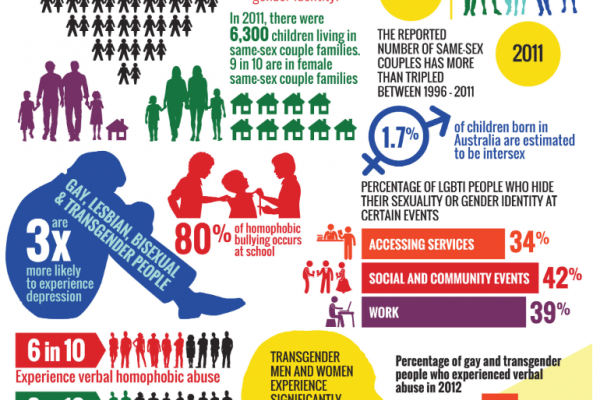Sex Discrimination Amendment (Sexual orientation, gender identity and intersex status) Bill
On 1 August 2013 it became unlawful to discriminate against a person on the basis of sexual orientation, gender identity and intersex status under federal law. Same-sex couples are also protected from discrimination under the definition of ‘marital or relationship status’. These protections particularly apply to lesbian, gay, bisexual, trans, gender diverse and intersex people.
Equality and freedom from discrimination are fundamental human rights that belong to all people, irrespective of sexual orientation, gender identity or because they are intersex. However, lesbian, gay, bisexual, trans, gender diverse and intersex (LGBTI) people in Australia can experience discrimination, harassment and hostility in many areas of everyday life. This can include discrimination and bullying in places of work and study, difficulties accessing appropriate health and aged care services and community attitudes that can lead to harassment and violence. Trans, gender diverse and intersex people can also face barriers getting legal recognition of their sex in official documents and government records. The amendment to the Sex Discrimination Act 1984 (Cth) (SDA) protects against discrimination on the basis of sexual orientation, gender identity and intersex status.


